Simian City: The Monkeys of Lopburi
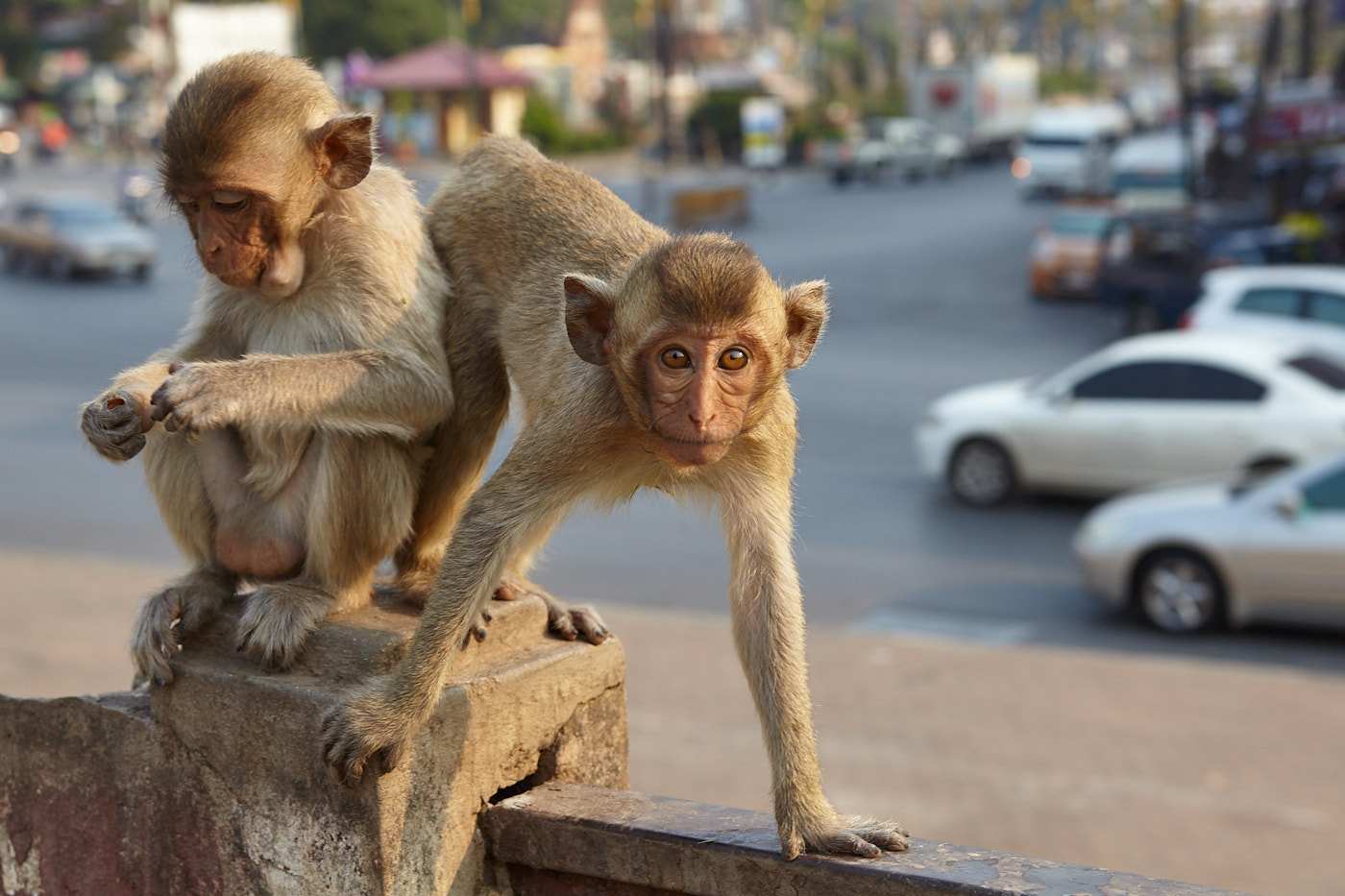
Simian City: The Monkeys of Lopburi
It is early morning in Lopburi, and a monkey has grabbed a bottle of yummy looking yellow liquid and is scampering off along the electrical cables attached to the side of a building. In hot pursuit, a woman is striking at the creature with a long bamboo pole and yelling oaths in Thai. But the monkey hasn’t thought out its route and, at the end of the building, realises it is going to need both hands to escape. It drops its plunder and leaps to safety. The woman picks up the bottle of detergent and, still muttering curses, returns to her kitchen to finish washing the dishes.
“It is the nature of the monkey,” she sighs. But later she will put out food for she is aware that the town’s monkey population has brought to Lopburi what a thousand years of history could not. Tourists.
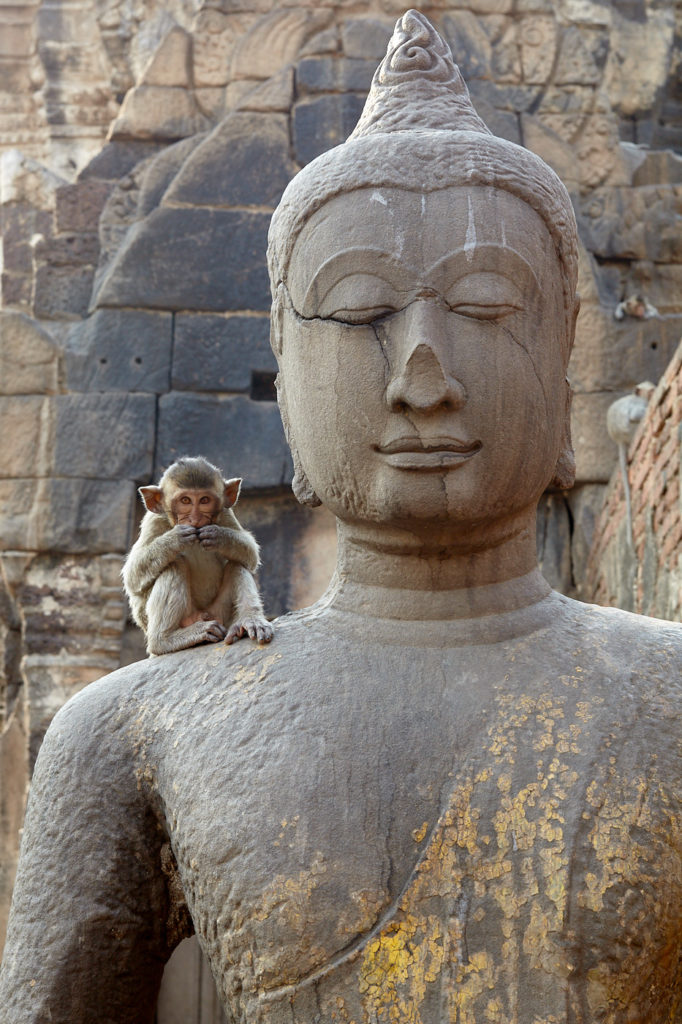
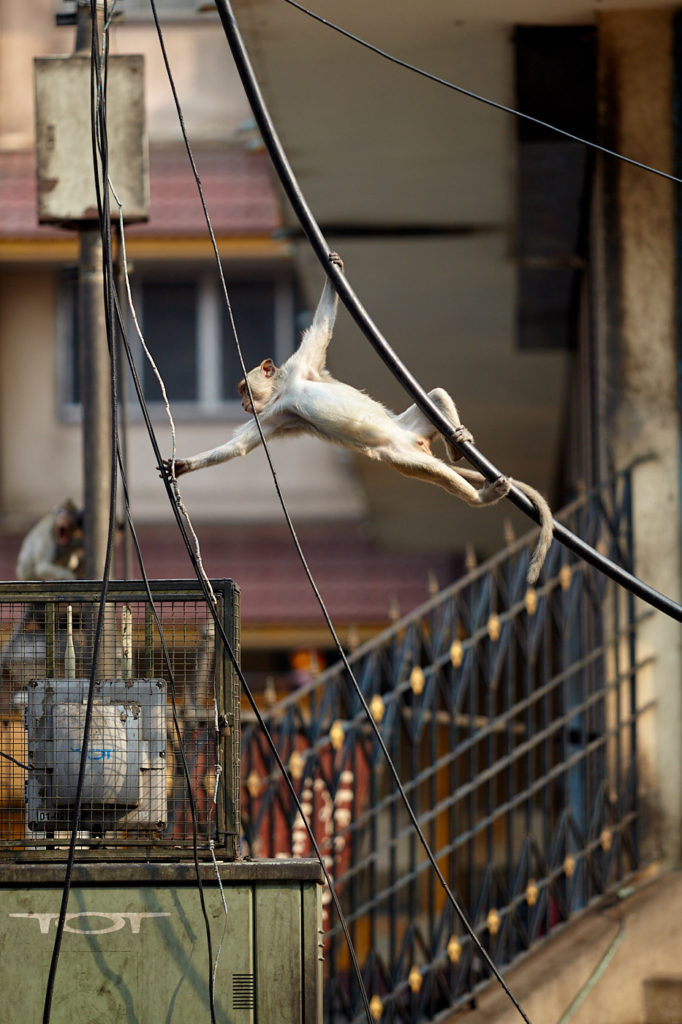
A lofty perch in the Phra Prang Sam Yot (left). Electrical cables are just as good as vines
Lopburi is one of Thailand’s oldest cities. It was inhabited as far back as the sixth century, when it was known as Lavo, and was a Khmer military outpost during the Angkor period. From the thirteenth century, it came under Thai influence. King Narai of Ayutthaya built a palace in 1665 when the city served as Siam’s second capital.
The only relics from the Lavo period are in the Lopburi National Museum, though ruins from the other periods still dot the old part of town. The ancient capital of Ayutthaya, a UNESCO World Heritage Site, lies some 70 kilometres to the south but the tour buses, until recently, have largely ignored Lopburi.
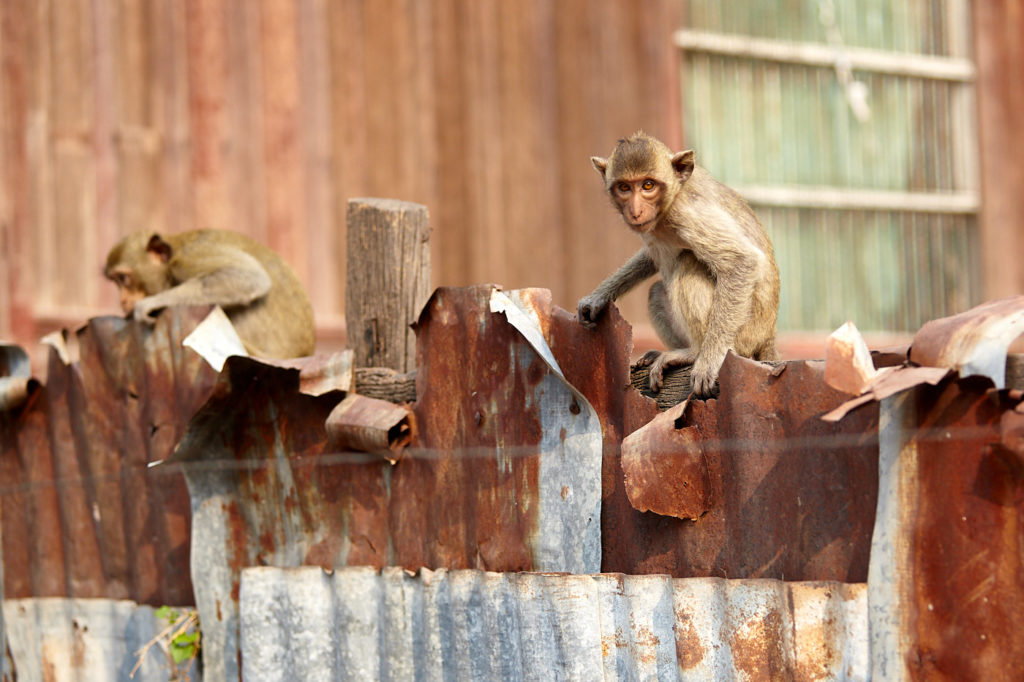
In the old market place
The simians arrived late in the seventeenth century, probably as a result of habitat destruction to make way for crops. They adopted the old Khmer style Phra Karn Shrine as their home. The shrine is dedicated to the Hindu deity Kala who looks after matters concerning time and death. The locals believed that they were disciples of the god and left the monkeys in peace.
Monkey Town
Since then the population has swelled and now anywhere between 2,000 and 3,000 of them are roaming the town. They are of the long-tailed macaque species (Macaca fascicularis) sometimes called crab-eating macaques in coastal areas. Another group has colonised the temple ruins of Phra Prang Sam Yot on the other side of the railway tracks. Both groups are well fed with fruits, nuts and unfortunately, brightly coloured jellies that look a lot like detergent.
A third group, rumoured to have been founded by a half-blind alpha male who lost his dominance, inhabits the rooftops of buildings and an old disused market. These tend to scavenge a lot more and are the ones responsible for upsetting garbage cans and stealing things from homes and shops.
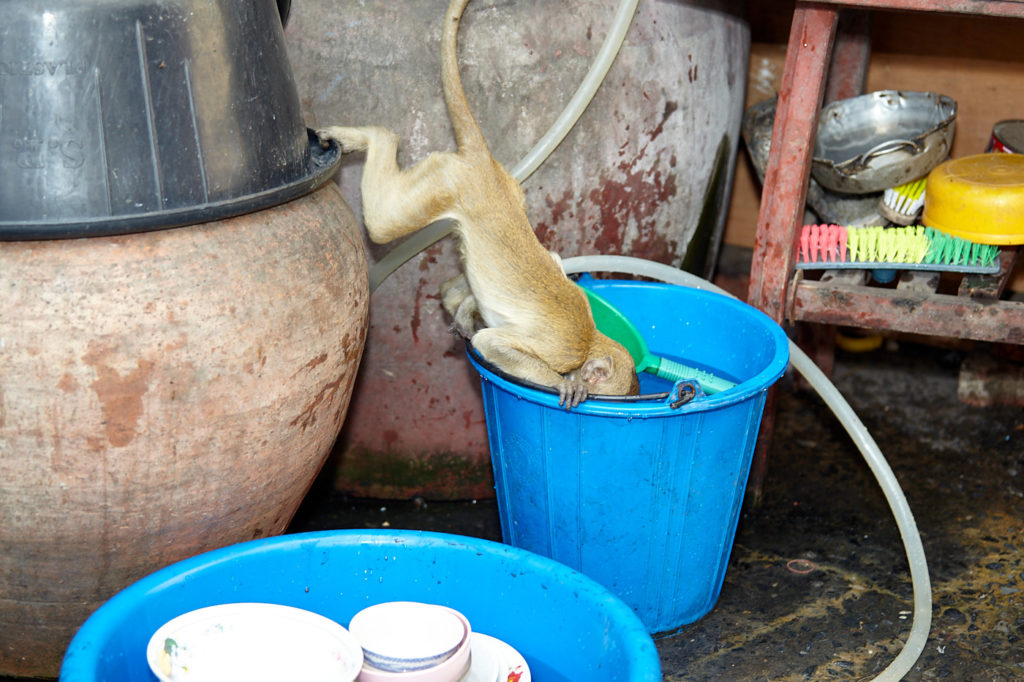
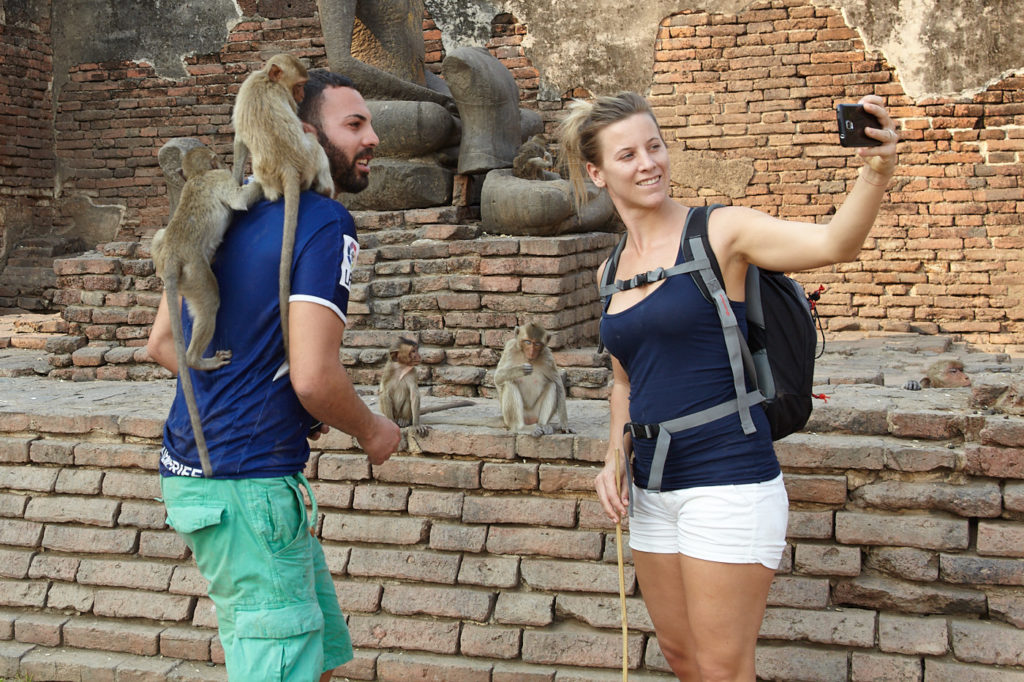
Helping wash the dishes (left). Don’t wear jewelry and keep a tight grip on your phone
All three groups are immensely territorial. They are separated by a busy intersection and a railway line and, while some incursions can be tolerated in the quest for food, squabbles frequently break out. The monkeys have also been known to hitch rides on buses and trains and can cause traffic jams at any time of day if several hundred of them decide to cross the road en masse.
Despite this, they have been adopted as the town’s mascot and are used to promote tourism to Lopburi. A number of small hotels and guesthouses have sprung up in the old part of town and, these days, tour buses can often be seen parked alongside the railway track between the Phra Karn Shrine and Phra Prang Sam Yot.
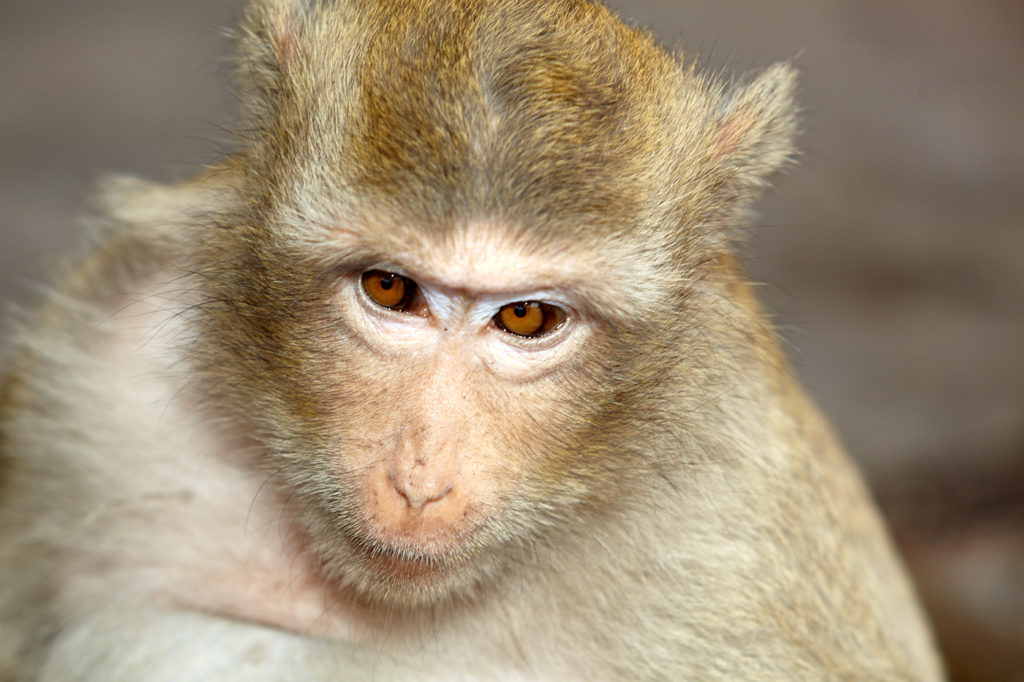
None of the groups have any fear of humans but it is the temple and shrine monkeys that attract the most tourists. And of course, there are vendors selling monkey snacks for you to distribute. But be warned, while you may like the idea of holding out a banana for a cute little monkey, these intelligent critters don’t behave like squirrels or pigeons. Given half a chance they will mug you from behind, snatch the entire bagful and make off up the temple walls.
Read also: Sukhothai, The Cradle of Thai Civilisation
It is better that you don’t feed them but if you must then avoid giving them candies, jellies and other sugary or processed snacks. It is very bad for their health and causes all manner of dental problems.
The younger ones will often jump on visitors anyway. They are just curious and won’t hurt you. Do make sure, however, that you do not have any open pockets or wear any jewellery, hats or sunglasses because you will lose them. And keep a tight grip on your phone and camera.